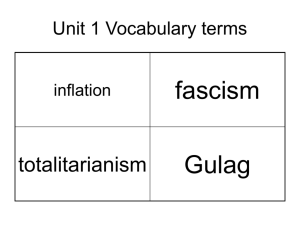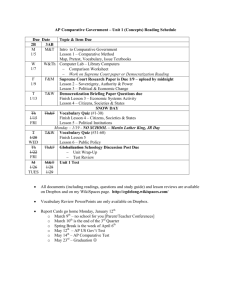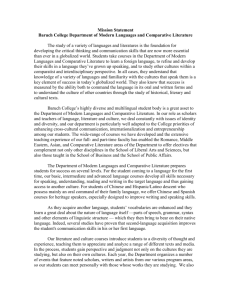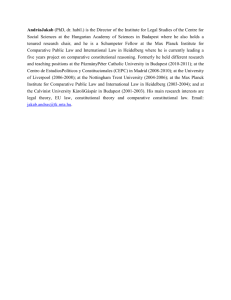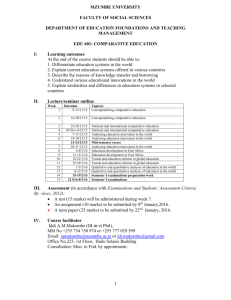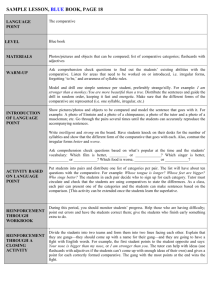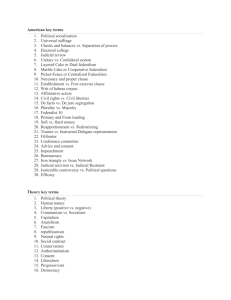Comparative Government: Key Terms & Methods Presentation
advertisement
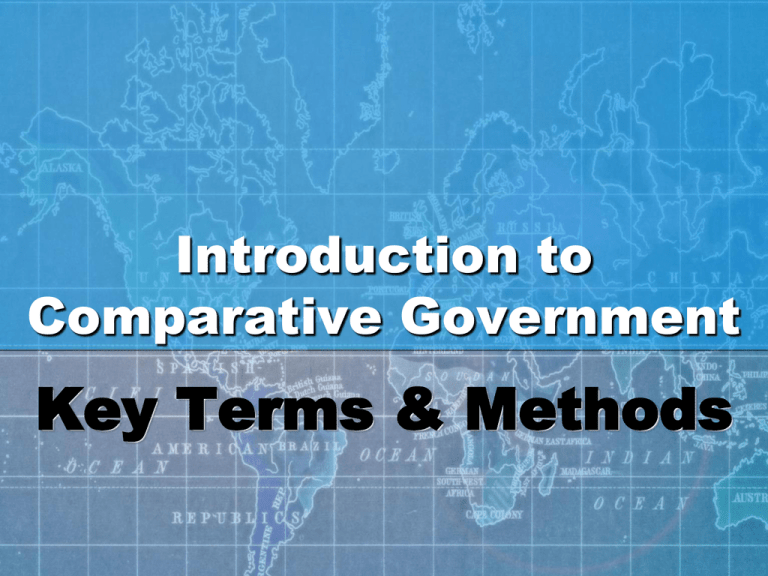
Introduction to Comparative Government Key Terms & Methods Before we begin… Government: the leadership and institutions that make policy decisions for the country Politics: the ways power is gained, managed, challenged, and maintained Why study other gov’ts? 1.It’s part of a well-rounded education 2.To better understand US 3.To consider the nature of power in various forms 4.To learn from positive and negative experiences The Comparative Method AristotelianTheory: # of Rulers Interest of Everyone SelfInterest By Social Group One Monarchy Tyranny King Oligarchy The Wealthy Few Many Aristocracy Polity or Ochlocracy Democracy The Poor The Comparative Method Three-World Approach: 1.United States + Allies 2.Soviet Union + Allies 3.Non-Aligned Countries (Usually economically underdeveloped & deprived) The Comparative Method But… this approach ignores these recent trends: 1.Impact of informal politics 2.Importance of political change 3.Integration of political & economic systems The Comparative Method Modern Classifications: 1. “Advanced” democracies 2.Communist & PostCommunist countries 3.Less developed & newly industrializing countries Authority & Power - Terms Sovereignty: The exclusive right to exercise political authority over a territory State: Has a government, population, territory & sovereignty (can use force!) Nation: Group with a common ethnic or political identity Authority & Power Regime: the form gov’t takes (often associated with a person or ideology) • Constitutional Democracy direct vs. indirect • Authoritarian System • Totalitarian System Legitimacy “The right to rule” • Traditional – history, ritual, divine law (often heredity) • Charismatic – personal magnetism of leader • Rational-legal – uses laws & procedures (bureaucratic) Culture & Ideology Political Culture: communityheld beliefs, feelings, & values that influence gov’t (ex. individualism, level of political participation, etc.) Political Ideology: personally held beliefs about actions and goals of government Ideologies • Classical Liberalism • • Political & economic freedom Communism • • • Values equality over freedom No private property, little freedom Socialism • • • Regulated economy & generous benefits Government owns key industries Fascism • • Strong, nationalistic state with few freedoms Religion/Theocracy Political Institutions Concentration of Power: • Unitary government • centralized power • Federal system • stratified power • Confederal system • diffused power Political Institutions Executive(s): President Head of State Symbol of the people Directly elected fixed term Leads cabinet Prime Minister Head of Gov’t Performs daily tasks From Legislature “no confidence” Collegial cabinet Political Institutions Legislature: • Unicameral vs. Bicameral • Most assemblies are weak • RARE: power to initiate legislative program, gov’t spending, or impeachment Political Institutions Judiciary: • Judicial review & activism • Administrative review • Power expanding recently • Ensure civil liberties/rights • Int’l agreements & treaties Political Institutions Globalization or Fragmentation? Supranational Organizations • NATO • European Union • OPEC • United Nations • NAFTA On Your Own Topic Three: Political & Economic Change Topic Four: Citizens, Society & the State Topic Six: Public Policy For your review: • Make a Venn Diagram with socialism, communism & fascism or presidential & parliamentary systems • Use Comparative Method to describe the United States




